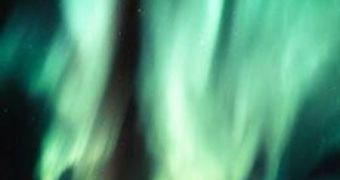In a groundbreaking new study that may change the way radio signals are bounced around the world in communications networks, experts managed to create an artificial ionosphere patch in the sky, by shooting powerful radio waves into the air. The “original” ionosphere is the uppermost portion of the Earth's atmosphere, and it plays an essential role in keeping harmful radiations at bay, by slowing them down and breaking them apart with the ions it contains. It is also the innermost edge of magnetosphere, the atmospheric layer that protects us from solar radiation, and allows for life to go on.
The High Frequency Active Auroral Research Program (HAARP), near Gakona, Alaska, is the project responsible for the new achievement. It has been probing the planet's magnetic field and ionosphere for more than twenty years, and one of its greatest accomplishments is that it can generate artificial auroras in the sky. These light curtains are naturally formed as incoming space radiation flows alongside the Earth's magnetic lines. The phenomenon can be seen best at the poles, although instances in which auroras became visible at lower latitudes are also documented throughout history, Nature News reports.
HAARP functions by generating high-frequency radio waves, which are able to accelerate electrons and other particles in the atmosphere to very high energies. Then, these particles slam into the ionosphere, some 250 kilometers above the planet's surface, and generate the same effects as cosmic radiation. With 3.6 megawatts of power at its disposal, the facility is able to generate auroras that are visible to the human eye, its engineers say. It has three times more power than the average radio transmitter, they add.
“The novelty is not seeing the aurora – it's the fact that we can actually create enough high-energy electrons to form plasma. It shows something completely different and new that we hadn't expected. We didn't know we could do that from a radio array on the ground,” explains the chair of Experimental Space Science, at the Lancaster University, in the UK, Mike Rosch. The expert was not involved directly in the new experiments. Details of the HAARP achievement are published in the latest issue of the respected scientific journal Geophysical Research Letters.

 14 DAY TRIAL //
14 DAY TRIAL //